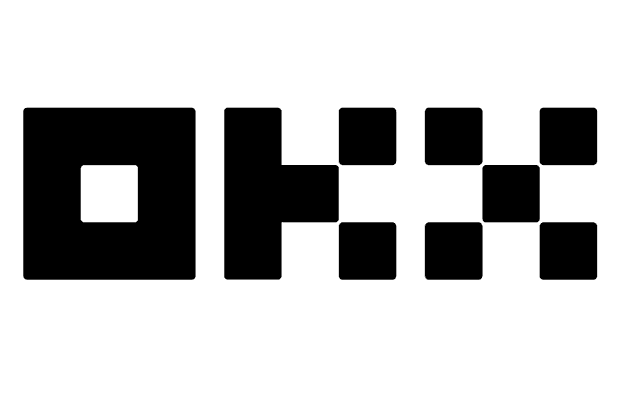How To Buy Polygon (MATIC) In 2026
MATIC is the native coin of the Polygon network.
Step 1:Choose A Wallet
To keep your MATIC in your own wallet, you’ll need a compatible wallet, such as MetaMask, Coinbase wallet, or a Ledger hardware wallet.
Step 2: Choose A Crypto Exchange
MATIC can be purchased either through an exchange, like Coinbase or through a wallet application, like Exodus that supports the Polygon network.
Step 3: Decide On The Amount Of MATIC You Want To Purchase
Fund your account and choose an amount to buy. Most exchanges offer both limit and market orders.
Step 4: Store, Transfer, Or Use Your MATIC
The crypto assets you buy on an exchange are held in a custodial wallet. On certain exchanges, like Coinbase, you can transfer your MATIC to a self-custody wallet like those mentioned in Step 1 above.
Where To Buy Polygon MATIC With Credit Cards
Several popular exchanges offer MATIC:
Pros
- Wide range of features like crypto trading, stock trading and staking all on one platform
- Offers 8% cashback with Crypto.com's debit cards
- Available in the U.S.
Cons
- High withdrawal fees
- Have to hold $CRO for high rewards
- Sports betting on the NFL and NBA 🏈
- Crypto baskets to easily diversify your portfolio 🧺
- Stock trading straight from Crypto.com account 💲
Available globally, Crypto.com is a crypto exchange that also offers a range of products including (but not limited to)crypto debit cards, stock trading, and staking.
Pros
- Wide range of features like trading, staking, NFT marketplaces on one platform
- Lower trading fees than most exchanges
Cons
- Not available in the US
- OKX Wallet: Offers a non-custodial wallet that supports Ethereum, Solana and BNB Chain.
- OKX Earn: Fixed-term savings accounts to earn passive income on crypto holdings.
- Integrated TradingView:Professional-grade charting tools within the platform.
Available worldwide (except for the U.S.), OKX bridges the gap between centralized exchanges and the DeFi world with its multi-chain Web3 wallet.
Pros
- Earn up to 12% APY on crypto and fiat savings
- Offers credit card that gives you cashback in $BTC
Cons
- Not available in the US or Canada
- High interest rates often require staking $NEXO tokens
- Nexo Credit Card:Rewards of up to 2% in $NEXO or 0.5% in $BTC
- High-Yield Savings Accounts:Daily interest payouts with no lock-in period.
Nexo is a top choice for borrowing and lending, offering high-yield savings and instant crypto-backed loans with the convenience of its Nexo Card.
Honorable mentions:
MATIC Overview
| MATIC | Polygon | Jaynti Kanani Sandeep Nailwa Anurag Arjun | Mihailo Bjelic David Schwartz Jordi Baylina Antoni Martin Hudson Jameson Mark Cuban | 2017 (mainnet launch in 2020) | High Naut Capital Mark Cuban Kevin O'Leary Softbank Capital Makers Fund Alan Howard Dragonfly Capital Partners Alameda Research Galaxy Digital Sequoia Capital India and others. |
Why Does Anyone Buy Polygon MATIC?
Polygon offers a multifaceted scaling solution for Ethereum, allowing applications to connect to the network in several ways and bringing fast, affordable transactions for users. At launch, the ambitious project was named Matic, later rebranded to Polygon but keeping the MATIC token.
Investors choose MATIC for several reasons.
- Polygon offers affordable transactions. A smart contract execution that might cost $10, $20, or more on the Ethereum network costs just pennies on the Polygon network.
- Polygon is Ethereum compatible. Application developers can connect Ethereum-based applications to the Polygon network with minimal changes, saving fees for users and growing their reach.
- Polygon is fast. With speeds of up to 72,000 transactions per second, Polygon is among the fastest Ethereum alternatives available.
- MATIC is deflationary. Polygon’s own version of Ethereum’s EIP-1559 upgrade, launched in January 2022, brings better fee transparency and burns MATIC transaction fees, much like Ethereum burns ETH transaction fees.
- Polygon can pay a yield. Staking MATIC can pay a yield of up to 5% to 7% APY.
- MATIC is the fuel for the Polygon network. As demand for Polygon-based transactions rises, demand for the MATIC token also increases.
- MATIC is a top crypto. In its short history, MATIC has become a leading crypto asset, often earning a top-10 ranking by market capitalization.
Is MATIC Being Used?
At the time of this writing (01/2023), MATIC has $834 million in daily trading volume.
- DeFi: Decentralized finance (DeFi) applications like Uniswap, Aave, and Curve Finance enable users to connect using the Polygon network, saving on transaction fees.
- Staking:MATIC can be staked on the Ethereum network to earn a yield.
- NFTs:NFT (non-fungible token) marketplaces like OpenSea and Refinable allow users to buy NFTs using the Polygon network, reducing acquisition costs and speeding transactions.
- Metaverse projects:The metaverse can get expensive in a hurry on Ethereum if the network gets busy, but leading projects like Decentraland let you connect with Polygon, saving on gas fees when needed for transactions on the platform.
- Predictions market: Polymarket, a popular decentralized predictions market where users can place bets on the outcome of events, was built using Polygon.
Key Events For MATIC
- October 2017: Matic was founded, paired with an initial private launch of MATIC tokens.
- April 2019: Initial exchange offering distributed 19% of MATIC supply through Binance.
- May 2020: Polygon Mainnet was launched.
- February 2021: Matic rebrands to Polygon.
- May 2021: Mark Cuban invests in Polygon.
- December 2021: MATIC reaches its all-time high of $2.91.
- February 2022:$450 million raised in venture financing
- April 2022: Polygon commits to become carbon neutral.
- June 2022:Launch of Polygon ID, an ID system using zero-knowledge cryptography.
Discover Similar Tokens
- Cosmos (ATOM): Sometimes described as the “internet of blockchains,” Cosmos was developed to create interoperability between different blockchains.
- Avalanche (AVAX): Advertised as the “fastest smart contracts platform,”Avalanche combines speed with affordability and boasts Ethereum compatibility.
- Polkadot (DOT): Another network designed around interoperability, Polkadot allows Layer 1 blockchains like Ethereum to communicate with other blockchains.
- Cardano: (ADA):Cardano is a smart-contract network co-founded by Charles Hoskinson, also a co-founder of Ethereum, that offers faster transaction times and lower fees than Ethereum.
Frequently Asked Questions
The maximum supply of MATIC is 10 billion tokens. If MATIC reached $1,000, the market cap would be $1 trillion, or about as much as the entire crypto market cap. A move to $1,000 is unlikely in the foreseeable future.
In 2019, Polygon traded for less than a penny. As of this writing, the MATIC token trades at over $1, with an all-time high of $2.91. The Polygon network sees continued growth and development, which bodes well, but it’s impossible to predict future prices and performance.
Polygon acts as a scaling solution for Ethereum-compatible applications, bringing faster and cheaper transactions.
Solana and Polygon have a similar maximum throughput of around 65,000+ transactions per second, but Solana has a faster block time of just 400 milliseconds.
The Polygon network is developed by Polygon Technology, based in Dubai.
Yes. Kraken lets you use a credit card for MATIC purchases.
Yes.Coinbase offer debit card funding and feature MATIC trading. Coinbase also supports Polygon network withdrawals to another wallet.
Yes. For example, Coinbase allows PayPal deposits which can be used to buy MATIC.





